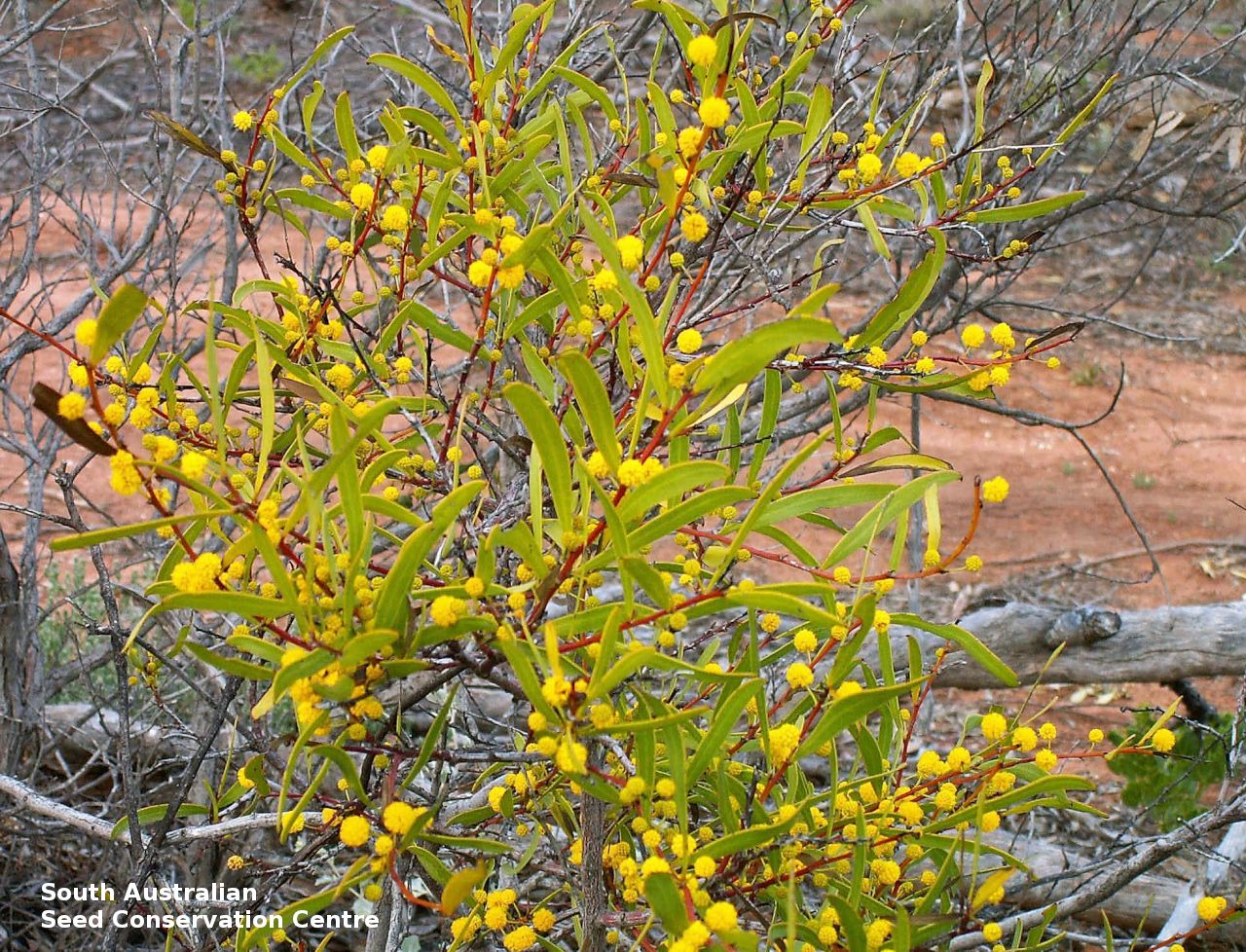
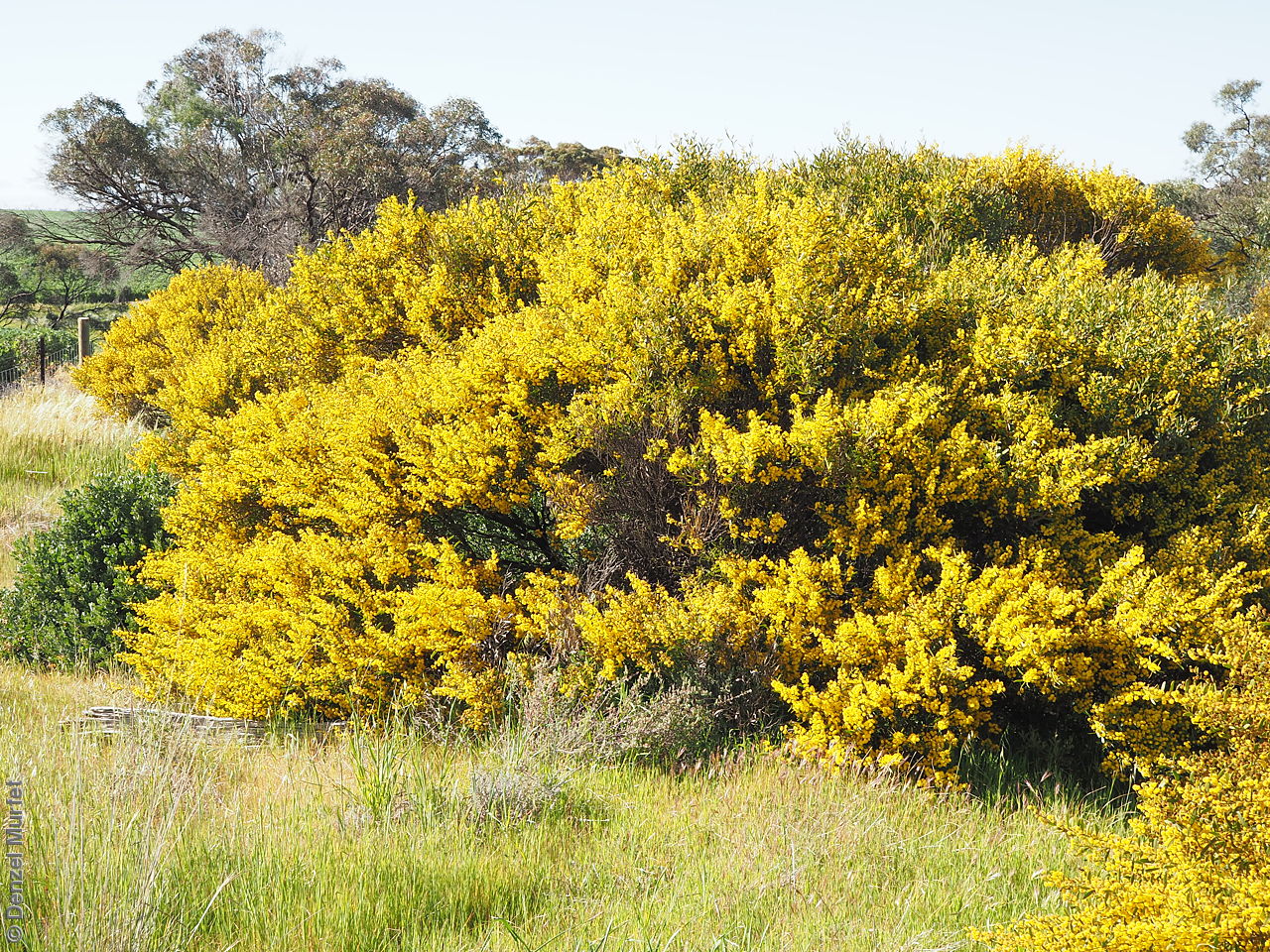
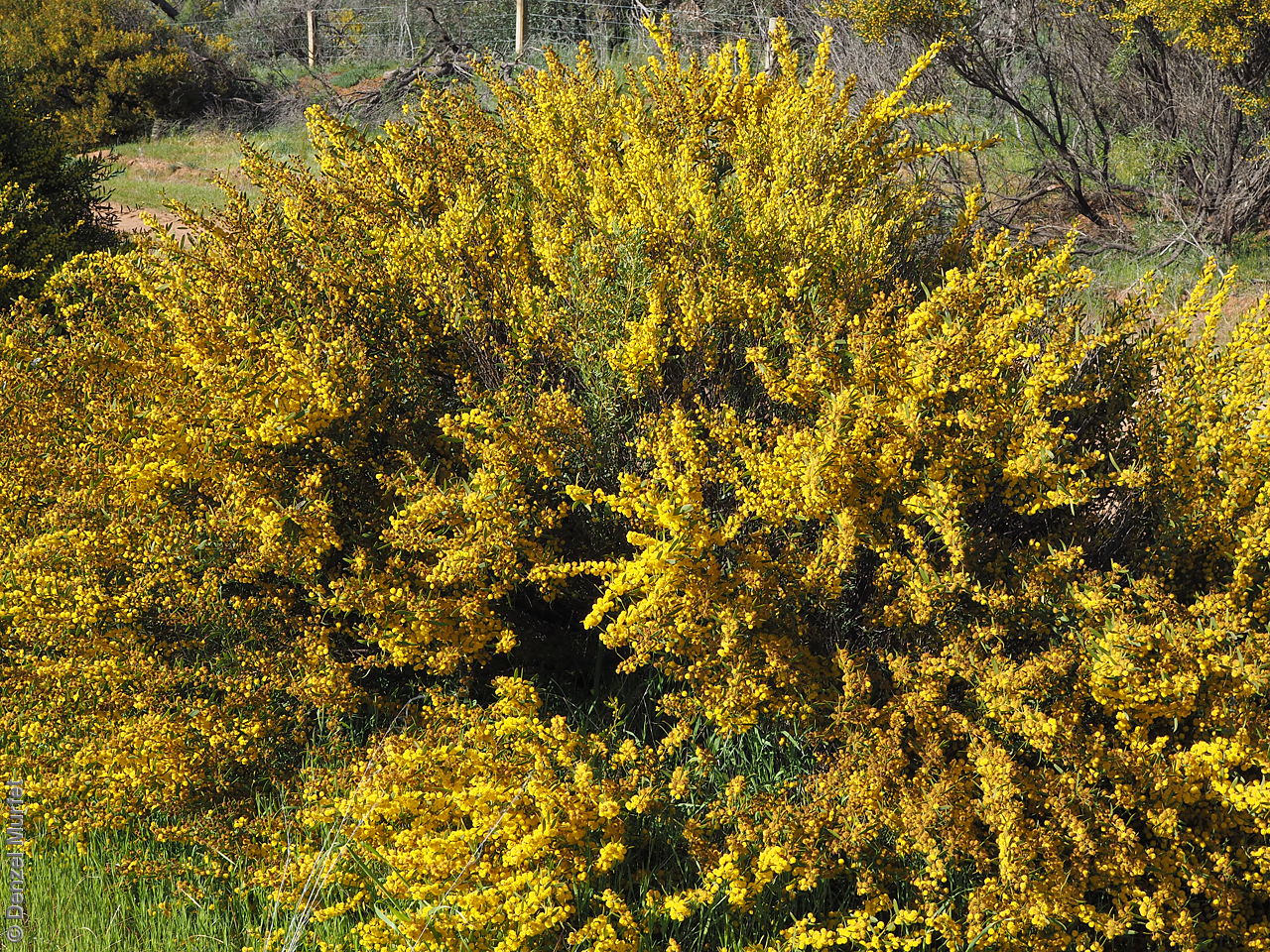
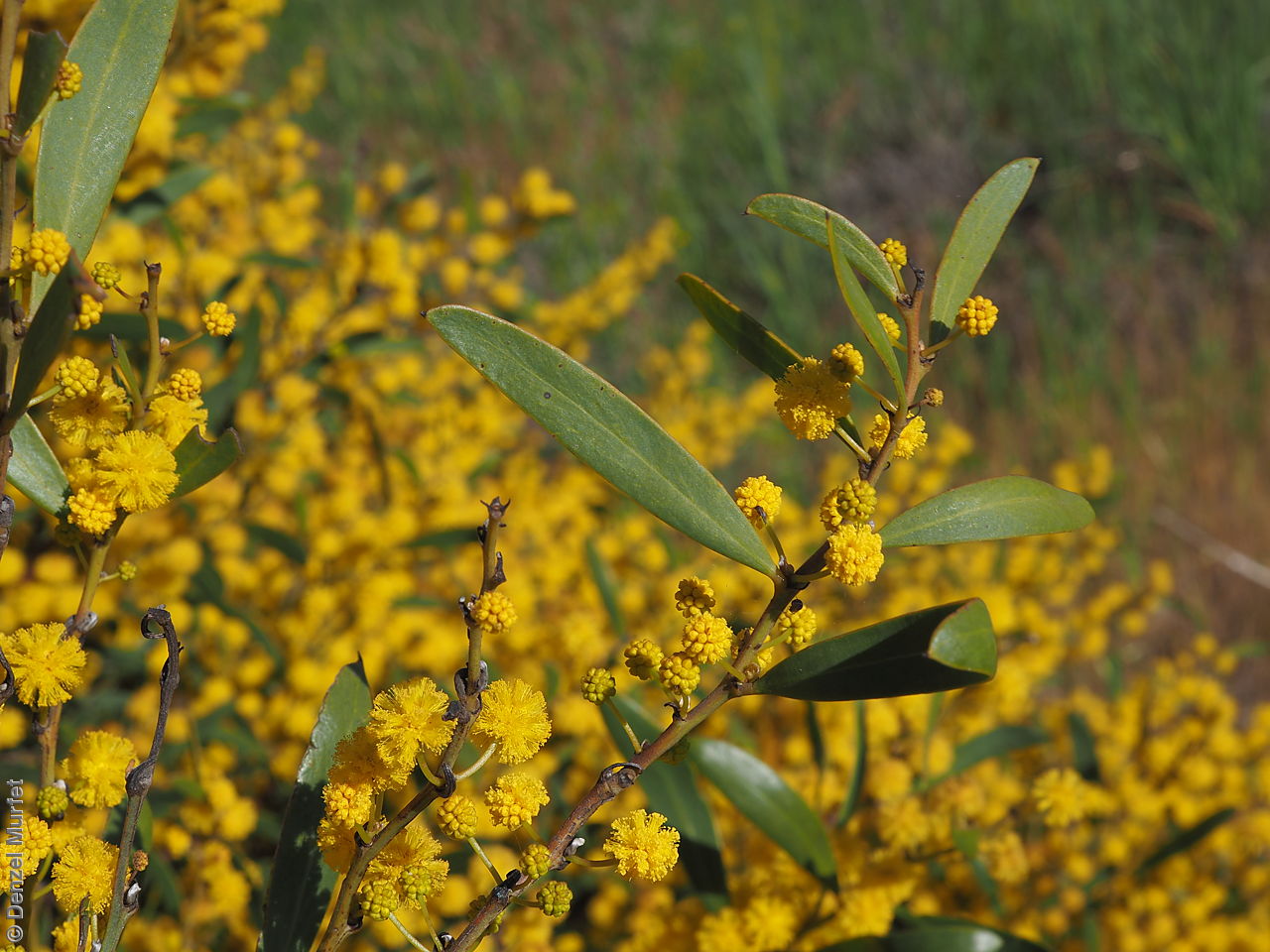
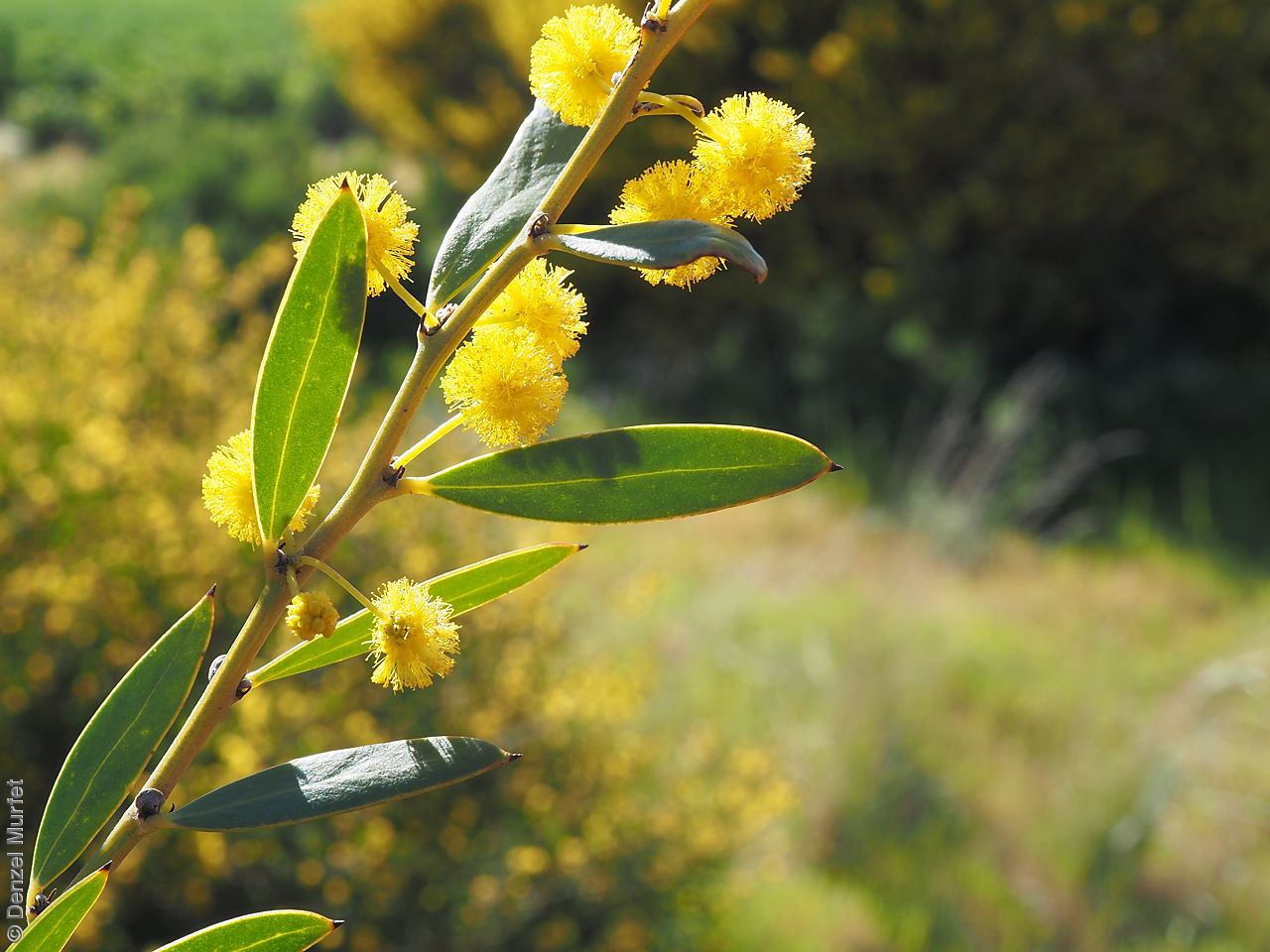
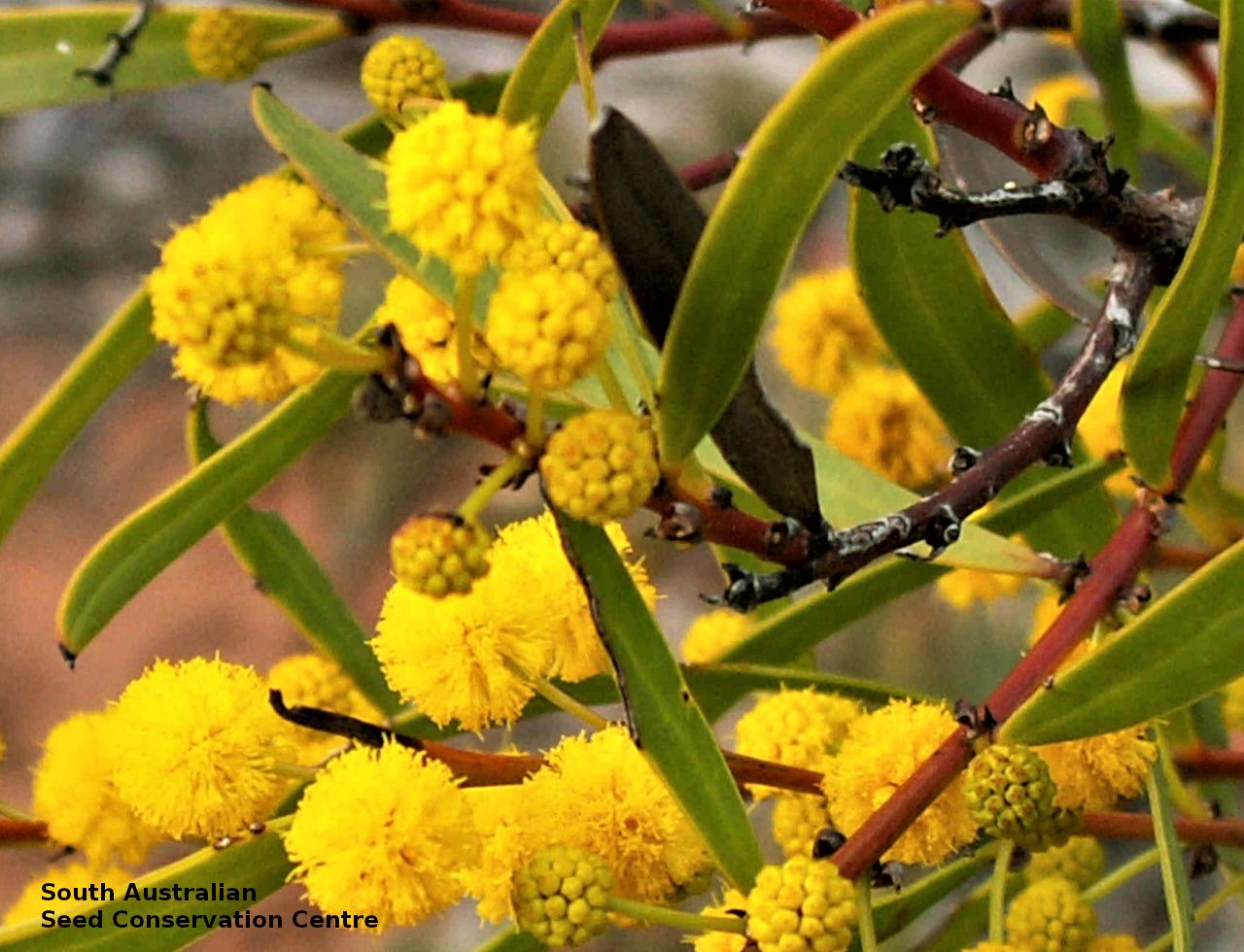
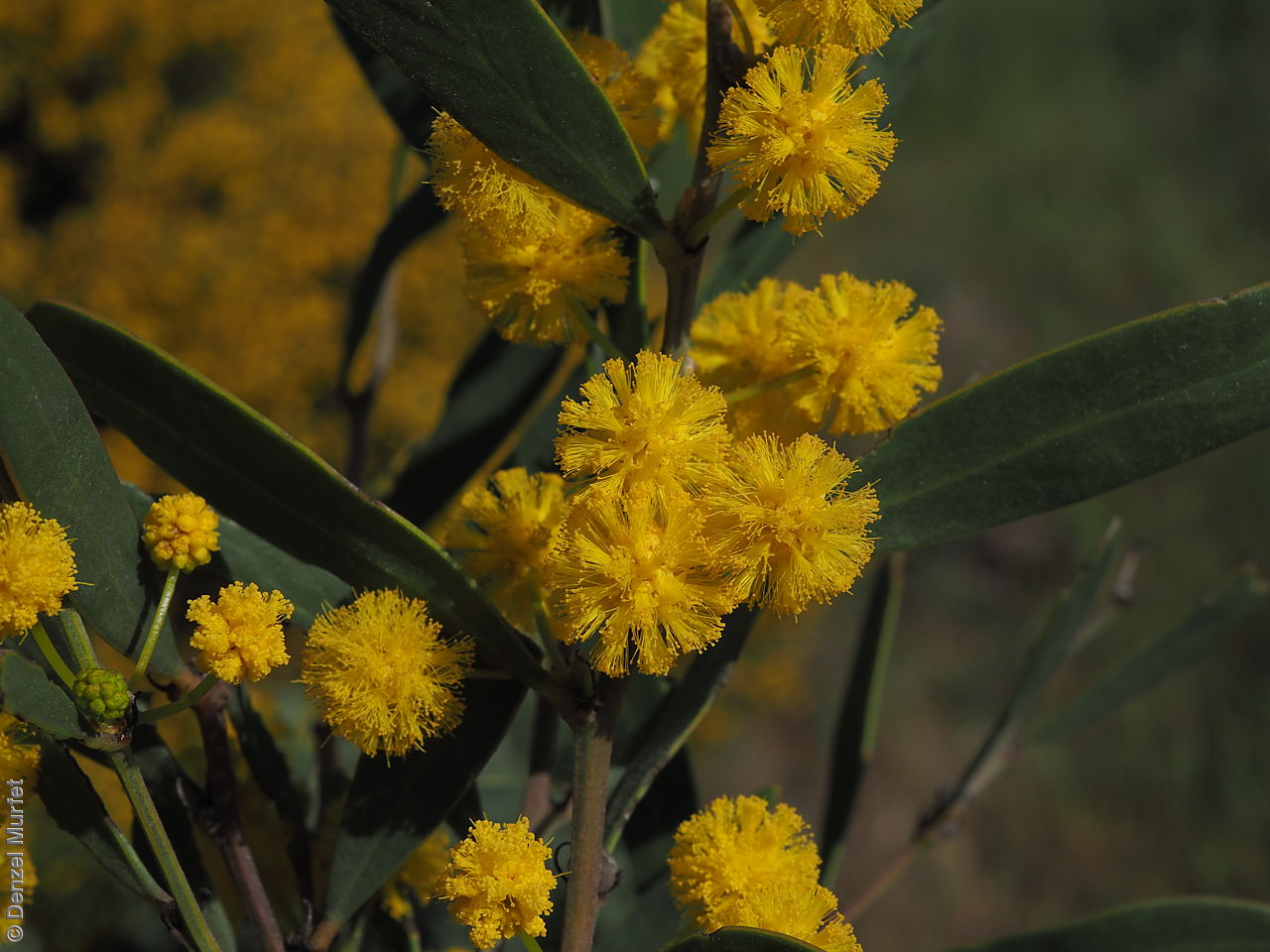
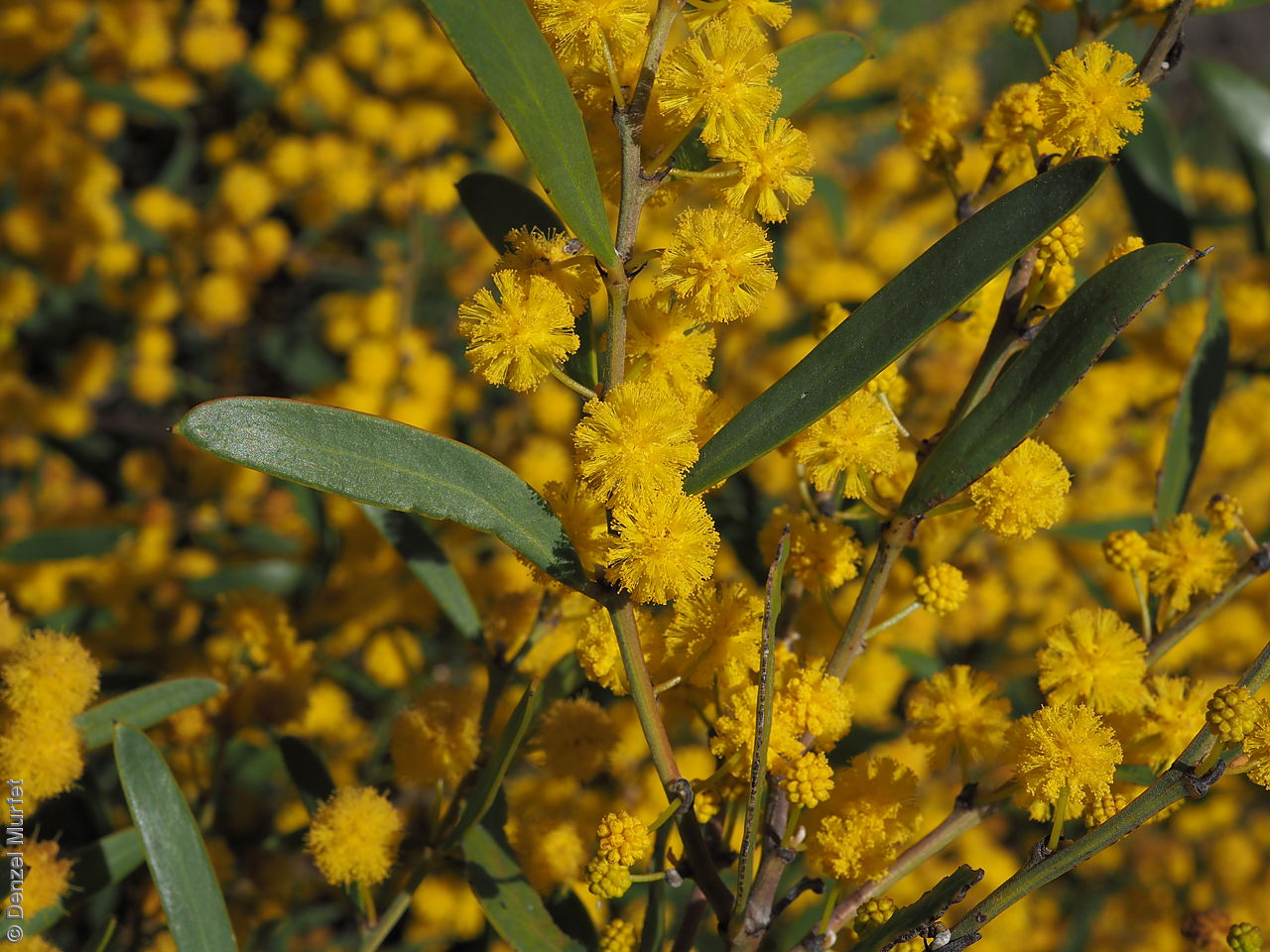

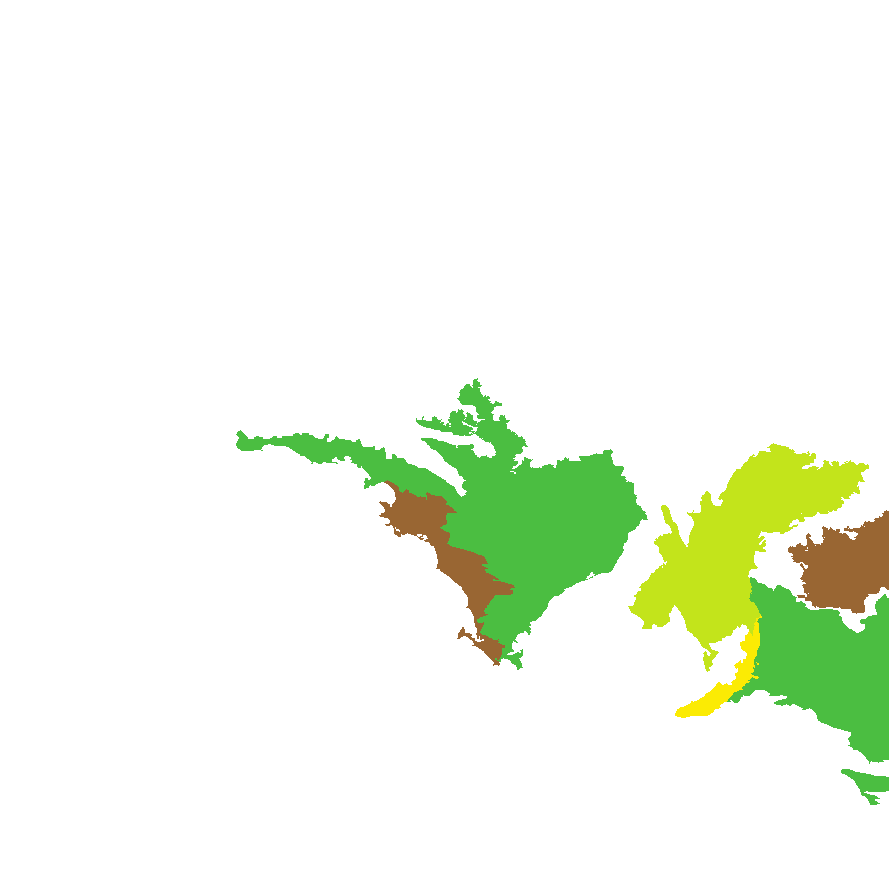
Botanical art
Prior names
Acacia iteaphylla var. latifolia
Etymology
Acacia from the Greek 'akakia' and derived from 'ake' or 'akis' meaning a sharp point or thorn and 'akazo' meaning to sharpen. Dioscorides, the Greek physician and botanist used the word in the 1st century AD for the Egyptian thorn tree, Acacia arabica. Halliana named in honour of Norman Hall (1906 - 2005) Hall who worked in forester for the South Australian state government, as lecturer on Forest Science, and photographer and writer on eucalypts with CSIRO.
Distribution and status
Found on the Eyre Peninsula, northern Yorke Peninsula, Mount Lofty Ranges and the Murrayland in South Australia, growing on red-brown sands and light calcareous soils in mallee. Also found in New South Wales and Victoria. Native. Common in South Australia. Common in the other States.
Herbarium regions: Eyre Peninsula, Northern Lofty, Murray, Yorke Peninsula, Southern Lofty
NRM regions: Adelaide and Mount Lofty Ranges, Eyre Peninsula, Northern and Yorke, South Australian Murray-Darling Basin
AVH map: SA distribution map (external link)
Plant description
Bushy, spreading shrub to 2.5 m high and 5 m wide with flattened branchlets, slightly to prominently angled at extremities, new shoots usually densely hairy. Leaves oblanceolate to narrowly oblong or narrowly elliptic, to 7 cm long and 15 mm wide, straight to slightly curved, usually glabrous and leathery-like. Inflorescences in leaf axils with 1-2 globular, golden flowers. Flowering between August and October. Fruits are glabrous or sparsely hairy, black to 6 cm long and 3 mm wide, sub-moniliform (constricted at regular intervals so as to resemble a string of beads) and twisted loosely and irregularly. Seed embryo type is investing.
Seed collection and propagation
Collect seeds between November and January. Collect mature pods that are turning brown with hard, dark seeds inside. Place the pods in a tray and leave to dry for 1-2 weeks or until the pods begin to split. Then rub the dried pods to dislodge the seeds. Use a sieve to separate any unwanted material. Store the seeds with a desiccant such as dried silica beads or dry rice, in an air tight container in a cool and dry place. Seed viability is usually high. This species has physical dormancy that needs to be overcome for the seed to germinate (e.g. nicking or softening the seed coat).